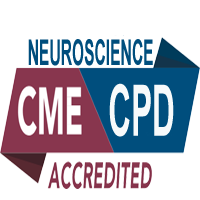Luca Pasquini
La Sapienza-University of Rome, Italy
Title: CORRELATION BETWEEN MAGNETIC RESONANCE AND CLINICAL EVALUATION OF GRAVE'S OPHTALMOPATHY
Biography
Biography: Luca Pasquini
Abstract
The exact role of Magnetic Resonance (MR) in the evaluation of Graves's ophtalmopaty (GO) onset is still not completely delineated, especially regarding the convenience of performing an MR acquisition with gadolinium-based contrast administration or not. The purpose of this retrospective study was therefore to verify the correlation between MR and clinical and laboratory data in GO at its clinical onset and during follow-up, by comparing pre-contrast and post-contrast sequences. MR examinations of 58 patients with affected by GO were retrospectively included. In each patient "signal intensity ratio "values (SIR) in the most affected extrinsic orbital muscle, in both T2 and post-contrast T1-weighted sequences, ocular proptosis and optical nerve impingement was evaluated. Univariate ANOVA analysis (p<0,05) to compare clinical activity (CAS) and severity scores, TSH receptor antibodies (TRAb) titre and single or global radiological measurements was performed. The statistical analysis showed a significant correlation between T2-SIR value and CAS (p=0.023) at diagnosis and during follow-up. CE-SIR correlated only with TRAb titre (p=0.008). Finally the global MR index (T2 SIR + proptosis + impingement) correlated with both CAS (p=0,036) and antibodies (p=0,014). MR orbits evaluation demonstrates a good correlation with clinical informations in patients affected by GO at diagnosis and during follow-up. T2-weighted sequences show a better correlation compared to post-contrast T1 weighted sequences, suggesting to avoid contrast administration for standard MR protocol for GO. Measurement of a global MR index may further support clinicians in the management of GO, improving a multidisciplinary approach to the disease.

